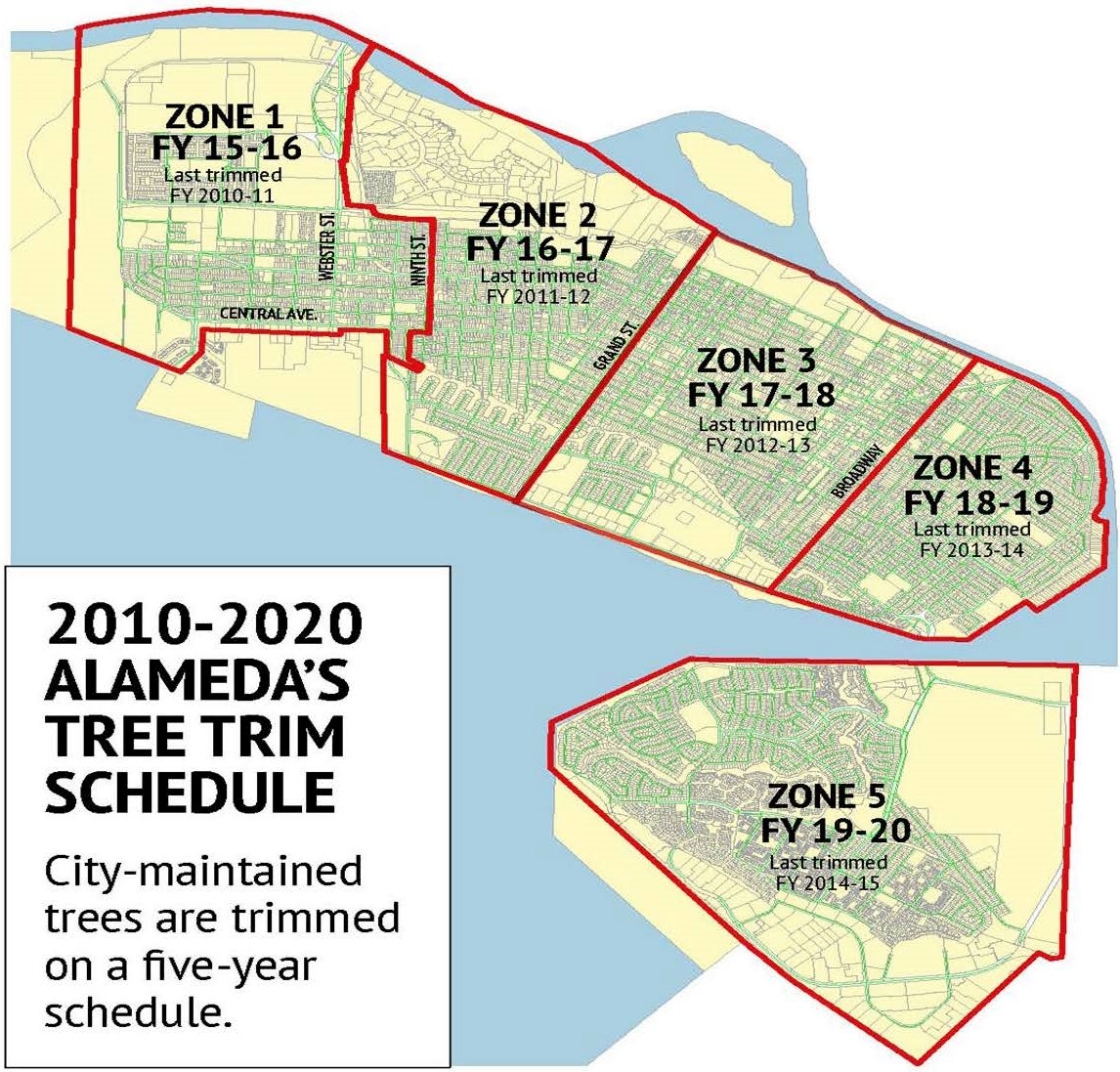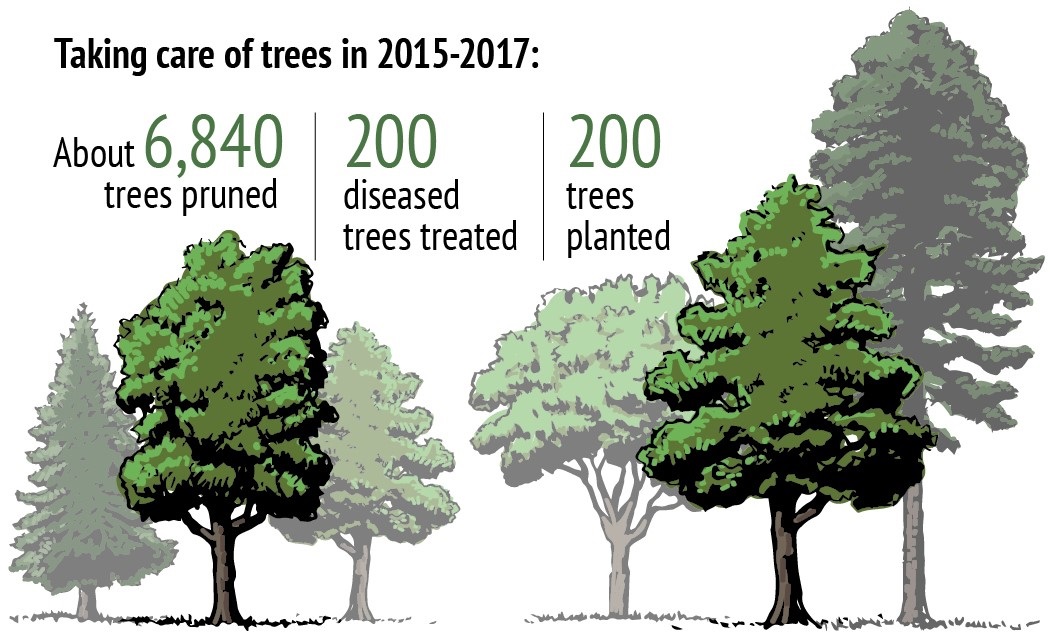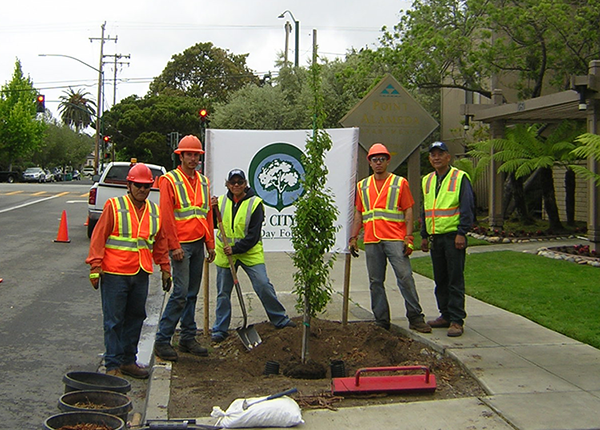Urban Forest
The city is divided into five zones and trims one zone per year. Zones have between 3,340 and 4,200 trees each. Trimming keeps the trees healthy, protects the public right of way, and decreases the conflict between trees, streets, and sidewalks. In addition, this project includes maintenance of 60 acres of landscaped areas and medians in the public right of way.
To maintain the City’s urban forest, a budget of $750,000 per year, adjusted for inflation, is probably sufficient through 2020. Funding is primarily through Gas Tax and supplemented with Construction Improvement Tax and other sources. Gas Tax revenue is likely to drop unless the state legislature acts soon. With lower Gas Tax revenue, either the maintenance service level will decline or the City’s General Fund or other funds will have to help.
In 2020, an update to the 2010 Master Street Tree Plan Volume 1(PDF, 7MB) and Volume 2(PDF, 5MB) will be performed. The results of that update might change how the City maintains its urban forest or whether the current revenue sources are sufficient.

Best Practices in Tree Management
City staff and contractors follow the best practices for tree trimming, including those spelled out in ANSI, ISA, by experts such as Dr. Costello, and various other practices that are contained in our tree trimming contractor’s agreement. The tree trimming contract is supervised by a City staff member who is a licensed arborist and certified tree risk assessor, and the City’s contractor employs arborists, certified tree climbers, and certified risk assessors.
Trees are assessed regularly both by staff and the contractor. Every street tree is inventoried by its size, variety, and health. Tree assessments occur during our regular trimming, as a result of residents’ requests, or where staff have identified trees that require more in-depth, ongoing assessments.
A tree that is a safety hazard can be removed immediately. If the tree is diseased or dying, a 3-day notice is used. If an otherwise healthy tree is being removed because of conflict with an existing utility, a 21-day notice is provided. Once removed, most trees are replaced in the following rain season and after consultation with the adjacent property owner.
Trees and drought
Concern grows about the impact on California’s forests from the record-setting drought. The drought is taking a toll on our street trees. Indeed, drought-weakened trees may be more prone to failure during the storm season. For that reason, Public Works’ preparations for this year’s storm season will include proactive monitoring of trees that may be vulnerable to failure.
Public Works is keeping a careful eye on the health of our street trees, as would be expected in a city that has earned a Tree City USA designation. Our staff, including a licensed arborist, have observed that street trees are producing fewer leaves in response to less water, which reduces the urban forest’s canopy. This effect is occurring throughout California.

Trees and local bird nesting
Measures the City takes to secure local bird nesting in street trees
1. West Coast Arborists staff are all certified “Wild Life Awareness” from Sims and Kidd Biological Solutions. A certification that enables staff the ability to identify and preserve birds and their habitat. http://www.kiddbioinc.com/
2. Migratory Bird Act is active year around to protect every aspect the local bird’s habitat as recent case studies have rules. West Coast Arborists activity enforces the ongoing protect of local birds.
3. No incidents have occurred with the current practice since every tree is inspected prior to posting and trimming.
4. Alameda Raptor Society are partners with City to add additional surveying and postings of trees with raptor nests.
